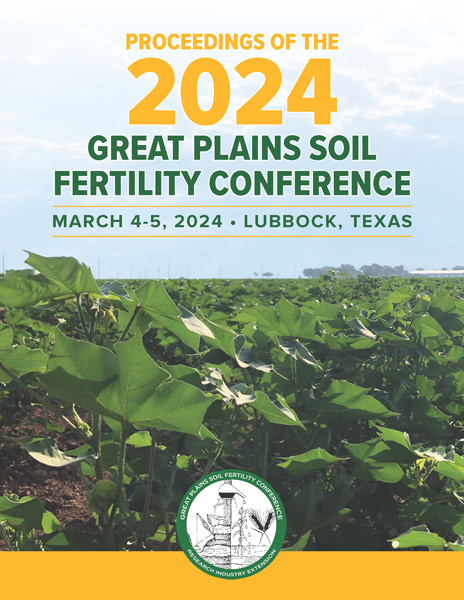Conference Proceedings Available!
Proceedings
Authors
| Filter results5 paper(s) found. |
|---|
1. Observational and Modeling Methods to Inform Ecosystem Service MarketsInterest in quantifying the impacts of land management on ecosystem services has grown as governments, environmental organizations, and corporations have pledged to reduce greenhouse gas emissions, nutrient leaching, and other environmental impacts of human activities. Ecosystem service markets were formalized in the 1990s and originally deployed to mitigate point sources of air and water pollution. Associated protocols were fairly simple and easy to implement because quantification of point sources... S.J. Del grosso, J. Delgado, D. Manter, C. Stewart, M. Vigil |
2. Effect of Soil and Foliar Application of Sulfur, Magnesium, Boron, and Zinc on Root Yield and Sugar Quality in Conventional Till and No Till Sugar BeetField experiment was conducted at the Eastern Agricultural Research Center in Sidney, MT, to determine the effect of S, Mg, B, and Zn on beet yield and sugar quality under conventional and no-till system. Split-plot design was used with 3.6 x 9.1 m experimental plots and four replicates. Tillage was main plot and micronutrient fertilizer was sub-plot. Tillage treatments included conventional and no-till. Fertilizer treatments included SUL4R-PLUS® (Ca & S), SUL4R-PLUS®B+Zn... C. Lim, C. Chen, C. Kowatch-carlson, B. Franck, T. Gross, R. Brown |
3. Combined Nitrogen with Magnesium or Zinc Effects on Sugarbeet Yield Sucrose Concentration, and Nutrient Uptake Under Conventional and No-till SystemsSugar beet (Beta vulgaris L.) is an important cash crop in the Lower Yellowstone River valley. Fertility, especially nitrogen (N) fertilizer, management is critical for sugar beet yield and sucrose concentration. While farmers are switching from a conventional tillage method to a no-till system for sugar beet cultivation, nitrogen (N) fertilizer application timing might need to be adjusted. Furthermore, micronutrients may enhance sugar beet yield and sucrose concentration. A two-year... C. Chen, M. Etesami, M. Abdelhamid |
4. Nitrogen Fertilizer and Rhizobium Combinations to Improve Yield and Quality of Mung Bean and Adzuki Bean in MontanaMung bean and adzuki bean are new alternative grain legumes that may be grown in Montana and provide benefits to Montana’s cropping systems by improving long-term diversification and productivity. The objective of this study was to investigate mung bean and adzuki bean response to nitrogen fertilizer and rhizobium combinations to determine the optimum fertilizer management. Two adzuki bean (Organic and O.R varieties) and two mung bean (Organic and L.N varieties) cultivars were grown under... M. Etesami, F. Etemadi, T. Gross, B. Franck, C. Chen, C. Kowatch-carlson, S. Franck |
5. The Effects of Manure Applications on Cotton Yield and Soil Greenhouse Gas Emissions in the Texas High PlainsThe cost of inorganic fertilizer is continually rising, which has caused an increased interest in alternative solutions. Along with fertilizer prices increasing, carbon emissions are following the same trend. There is an upcoming demand for organic fertilizer and carbon research. The purpose of this study was to assess the effects of various manure applications on crop growth and greenhouse gas emissions in three different cropping systems in the Texas High Plains. The no-tillage cropping systems... T. Roberts, K. Lewis |
